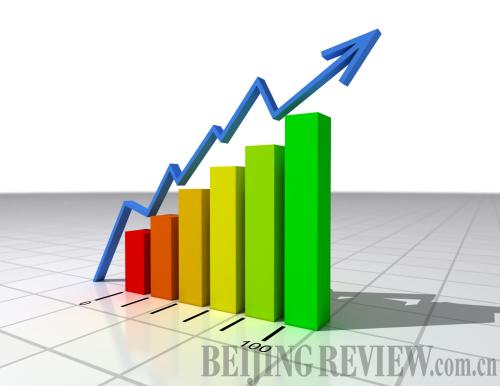| 
TRADE SURPLUS
China's trade surplus is likely to fall noticeably in 2010 given a less-than-optimistic outlook for exports combined with the probability that imports are likely to remain robust, according to a spokesman from the Ministry of Commerce. According to the source, China's export growth will slow down after July, despite a record high in May caused by a low comparison basis a year earlier. China's trade surplus in the first five months fell 59.9 percent to $35.39 billion. The figure in 2009 topped $196.07 billion, down 34.2 percent on 2008.
INFLATION PRESSURE EASES
China's consumer price index (CPI) is expected to grow by 2.6 percent (to be updated next week) in the first half of 2010 compared with one year ago, said the National Development and Reform Commission (NDRC), the nation's economic planning agency. Given that the world's major economies have only experienced moderate inflation and international commodity prices dropped sharply, this has simultaneously reduced domestic inflation pressures on China, according to a statement from NDRC. The CPI rose 3.1 percent year on year in May, up 0.3 percentage points from April's 2.8 percent.
GAMBLING
Due to rising gambling on sports during the 2010 South Africa FIFA World Cup, police in China raided several illegal websites and arrested their organizers across the country in June, including in Beijing. The turnover of most websites exceeded 100 million yuan ($14.6 million). An expert from the China Center for Lottery Studies at Peking University says the growing value of illegal online sports gambling is already more than 1 trillion yuan ($146 billion) per year in China.
TRADE PROTECTIONISM
The first quarter of 2010 saw a substantial decrease in global protectionist cases, according to a World Bank report. In the first three months of 2010, 13 different WTO member economies initiated new trade remedy investigations among which cases from developing countries accounted for 74 percent while cases from industrialized economies represent 26 percent. Named in 47 percent of new country-level investigations that may result in import restrictions, China's exporters remain the dominant target of these investigations.
FOREIGNERS' INCOME TAX
The State Administration of Taxation (SAT) confirmed in June that China will strengthen its foreign individual income tax management. Local taxation authorities will coordinate with public security departments to establish personal management records for foreigners in China and to improve tax clearance management on their departure from the country. The SAT stressed that payments originating from domestic units but paid by organizations overseas will be the focus of their management.
CROSS-BORDER CAPITAL
China's foreign exchange regulator, the State Administration of Foreign Exchange (SAFE), will strengthen monitoring on cross-border capital flows to reduce risk. It will enhance its monitoring on abnormal cross-border capital flows by cracking down on illegal private banks and Internet-based speculation in foreign exchange, said the SAFE in its annual report. The SAFE also said it will maintain a prudent approach to managing foreign currency reserves and continue to improve its diversification strategy.
COMESA FOOD SECURITY
The Common Market for Eastern and Southern Africa (COMESA) said that a two-year food security program has been started recently within the region. With total investment of $11.5 million, the program is going to improve agricultural market access in the area and help the small farmers in exporting their products. The COMESA said in a statement that due to uncertain food security, 19 of the organization's member countries have to spend $19 billion a year on imported food, of which $300 million worth of food comes from regional countries.
ONE ENGINE ECONOMY
The latest Kenya Economic Update released by the World Bank describes the Kenyan economy as "running on one engine," since growth is imbalanced and predominantly driven by domestic consumption fueled by imports. Due to the underperformance of the agriculture and manufacturing sectors, Kenya's exports shrank from 40 percent of total output in the 1960s to 26 percent in 2009. Kenya's economy is forecasted to grow 4 percent in 2010 and has the potential to grow 4.9 percent next year if no shocks occur.
NUMBER CRUNCHING
$45.3 billion
Medical expenditure in China since the implementation of its new medical reform in April 2009
56%
Portion of female legislators in Rwanda's National Assembly
223m hectares
China's forest-coverage target by 2020
52 minutes
Average time spent commuting to work in Beijing
300%
Profit increase for China's wine industry in the past five years |